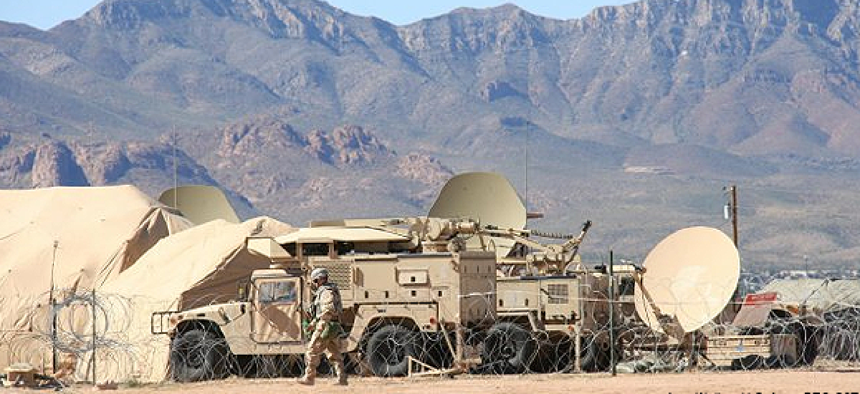Army data fabric to unify tactical, enterprise networks


Connecting state and local government leaders
The Army expects its common data fabric will allow it to easily send data back and forth from legacy and business systems to the tactical edge.
The Army expects its common data fabric will allow it to easily send data back and forth from legacy and business systems to the tactical edge. Key to that strategy, though, is unifying tactical and enterprise networks.
The Army released its Unified Network Plan Oct. 8, detailing a 10-year strategy to create a foundation needed to improve its data sharing and analytics capabilities -- a need highlighted during the Afghanistan withdrawal that concluded in August.
Brig. Gen. Jeth Rey, the director of the Army's network cross functional team, told reporters at Association of the U.S. Army annual conference that the withdrawal taught the Army that data was not readily available for commanders on the ground.
"Currently, our network-centric environment is just [the commander] going to reach for data when he thinks he needs it. We want a data-centric environment to produce information for the commander to make informed decisions. That's why we need a data fabric that we're now [demonstrating at Project Convergence '21 in November], we're using it there, to inform what the future is going to look like," Rey said.
Maj. Gen. Thomas Pugh, the director of networks, services and strategy for the Army's deputy chief of staff, G-6, said the Army was currently staffing the implementation plan with a focus on what can be done in 2022 and 2023 to begin integrating the enterprise network and making the unified network operational by 2025.
"There's a little bit of the integrated tactical network that is in there, but …it just needs to be slightly improved upon. But the enterprise is not integrated at all. And so there's a lot of activities that have got to occur to achieve the integrated enterprise network so that we can then converge the two," Pugh told reporters.
Terry Halvorsen, the former CIO at the Defense Department turned general manager and client development leader for IBM's federal and public sector business, said he thinks the Army has the right plan, especially with regard to the focus on data, but the execution -- particularly with regard to resources -- will be key.
"The Army, in some ways, has the biggest challenges…the Army's got to do this network convergence within the Army, but they also do with their allies. And it's a lot harder for the Army than say maybe the Air Force or the Navy just because of the size of the allies, size of the ground forces,” Halvorsen said, adding that “a lot of the Army allies are also working to do joint [networking], but ...they're not quite as technologically advanced, some of them, as the U.S. Army is.”
The former Defense CIO said DOD as a whole has a lot of legacy data that can't be moved at the same pace as commercial data: "It's just too much, lots of applications that are very specialized that are old. So how do you do all this convergence, and then stay within budget? And that's going to be the trick," he said.
A longer version of this article was first posted to FCW.





